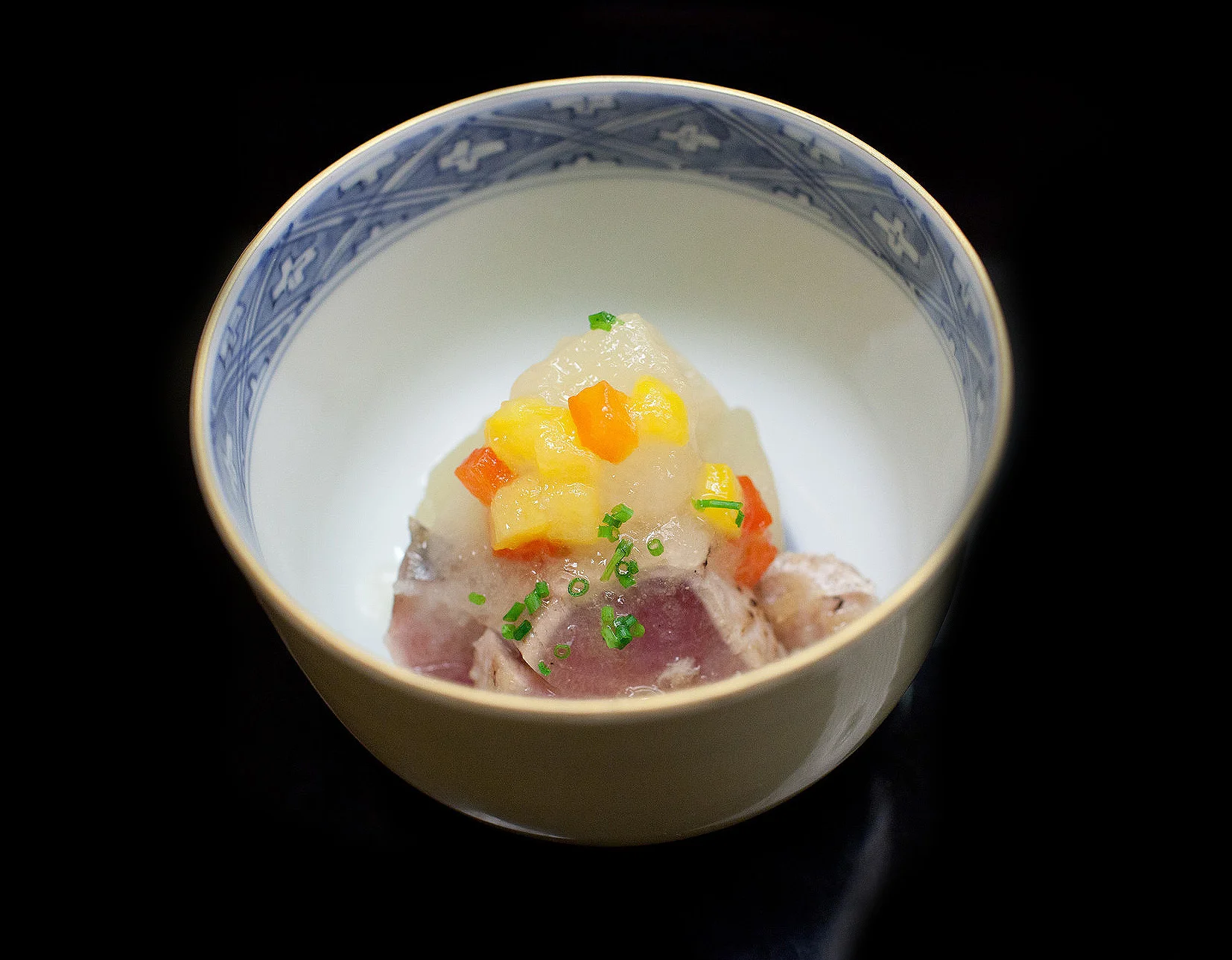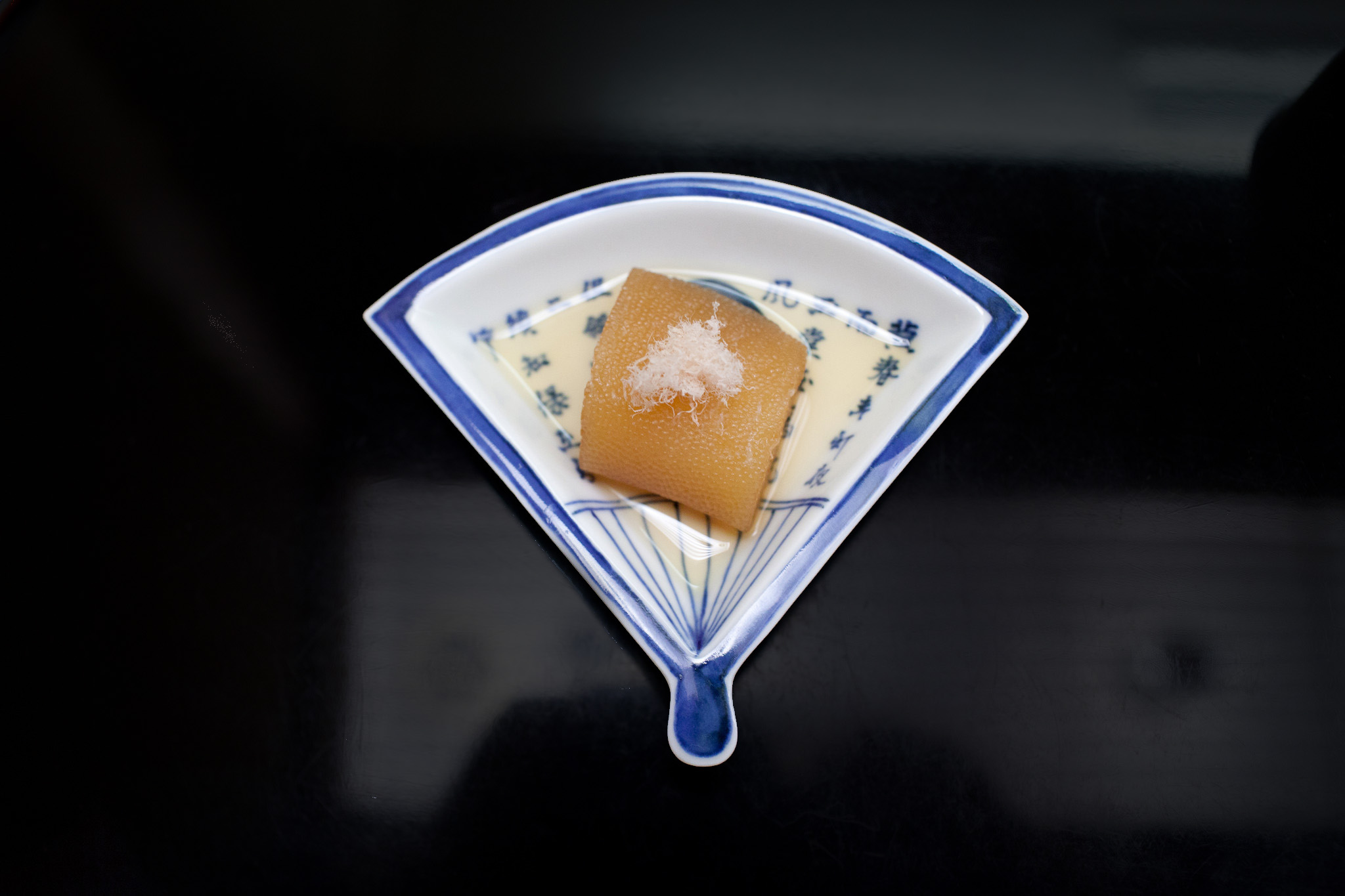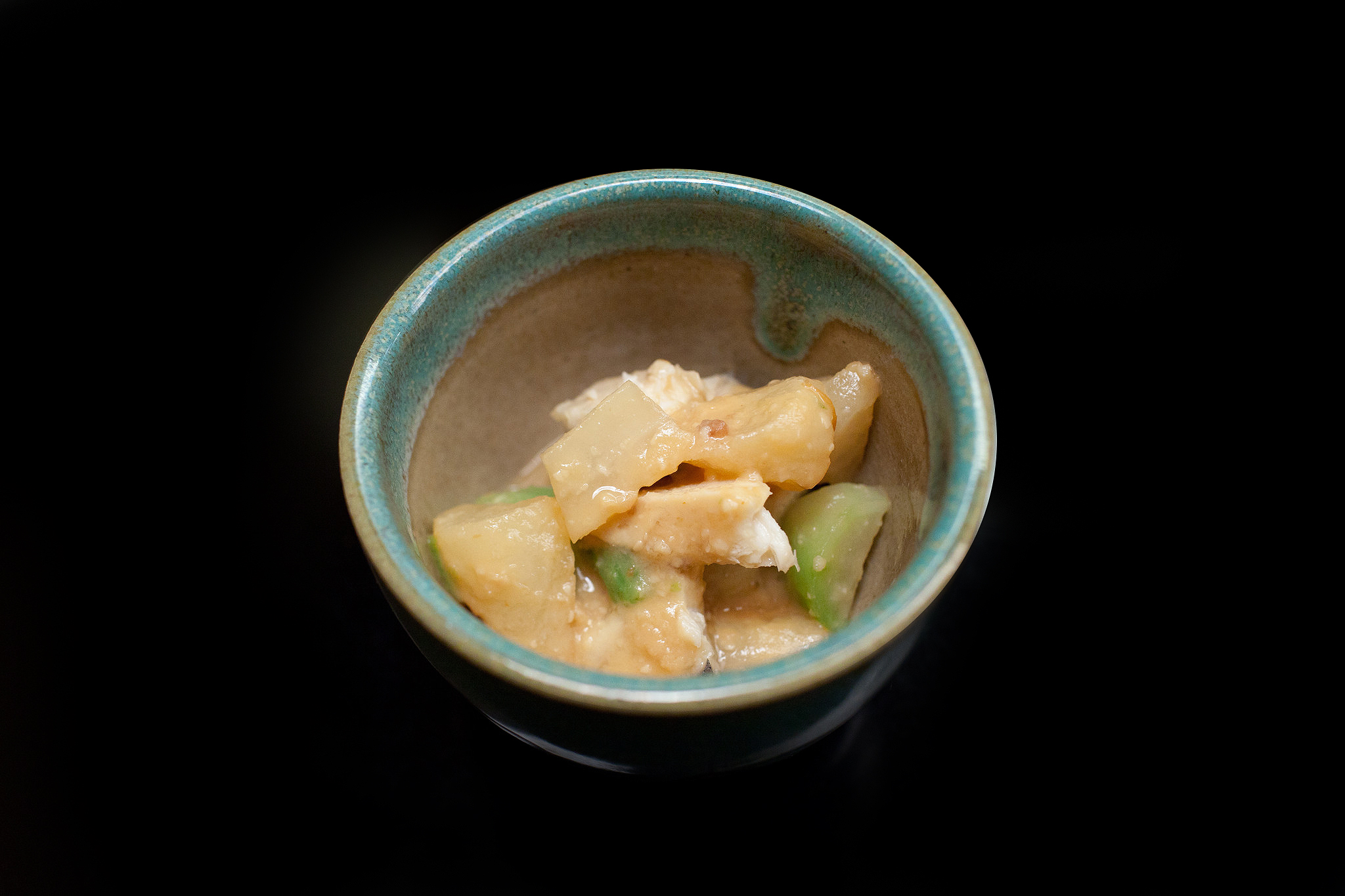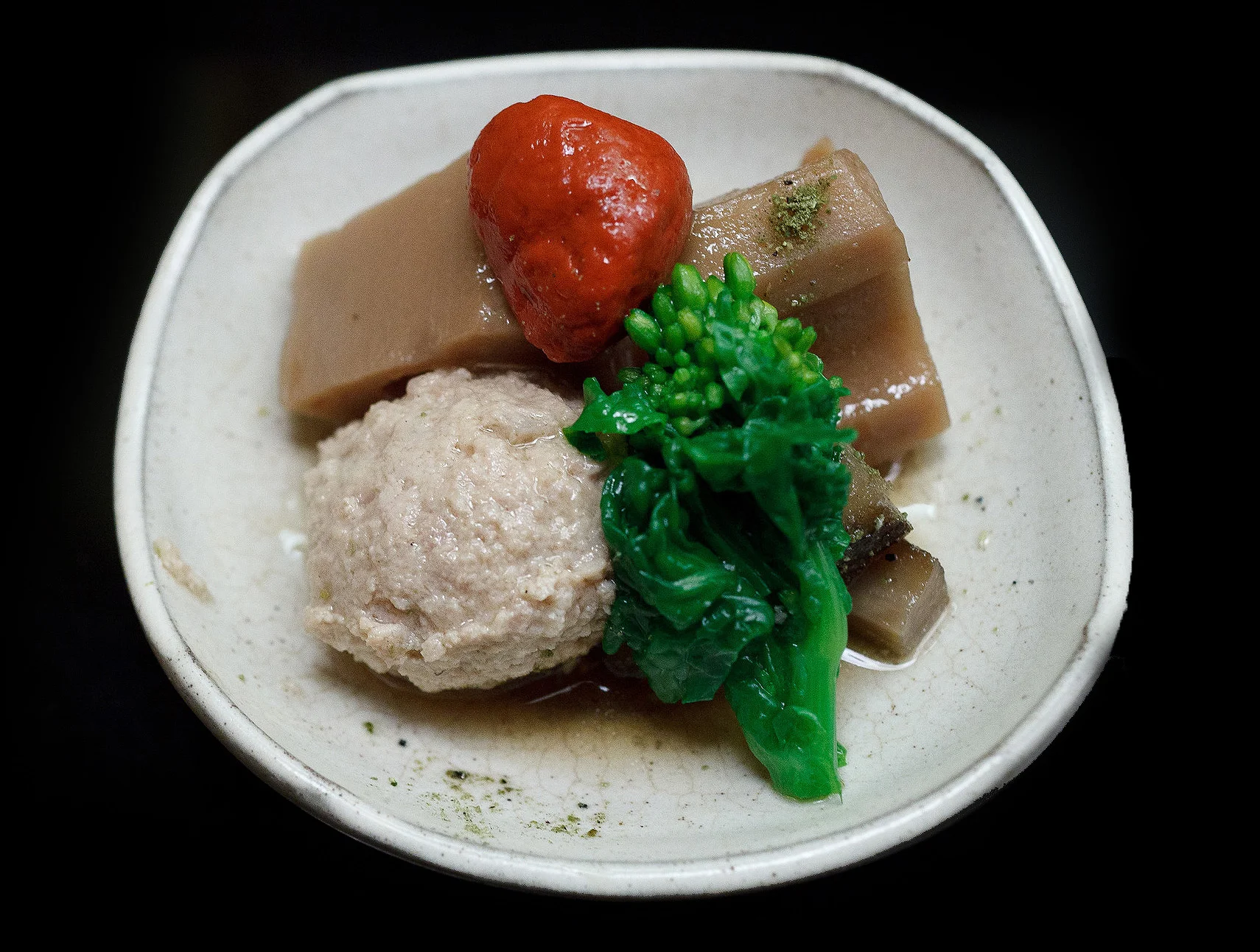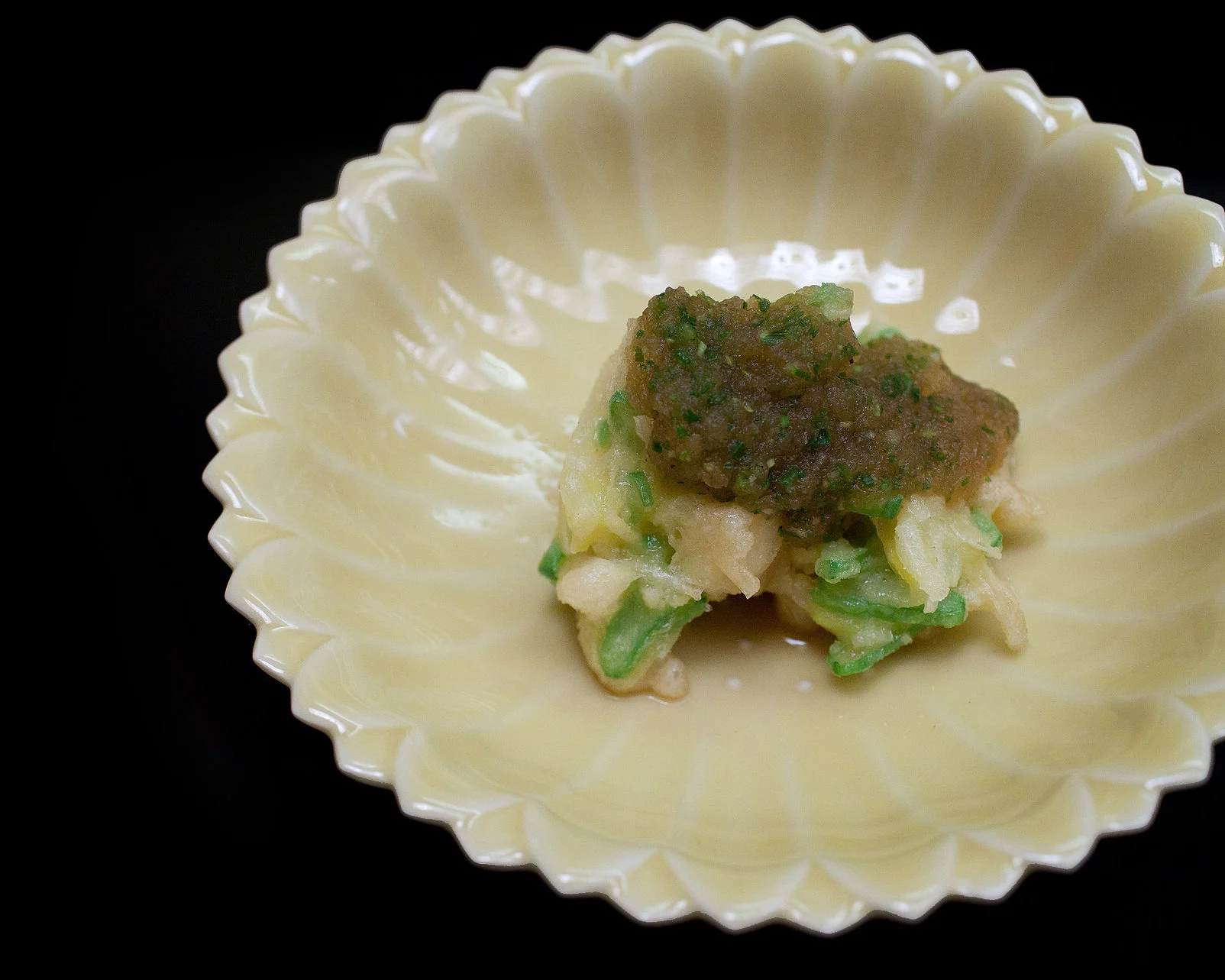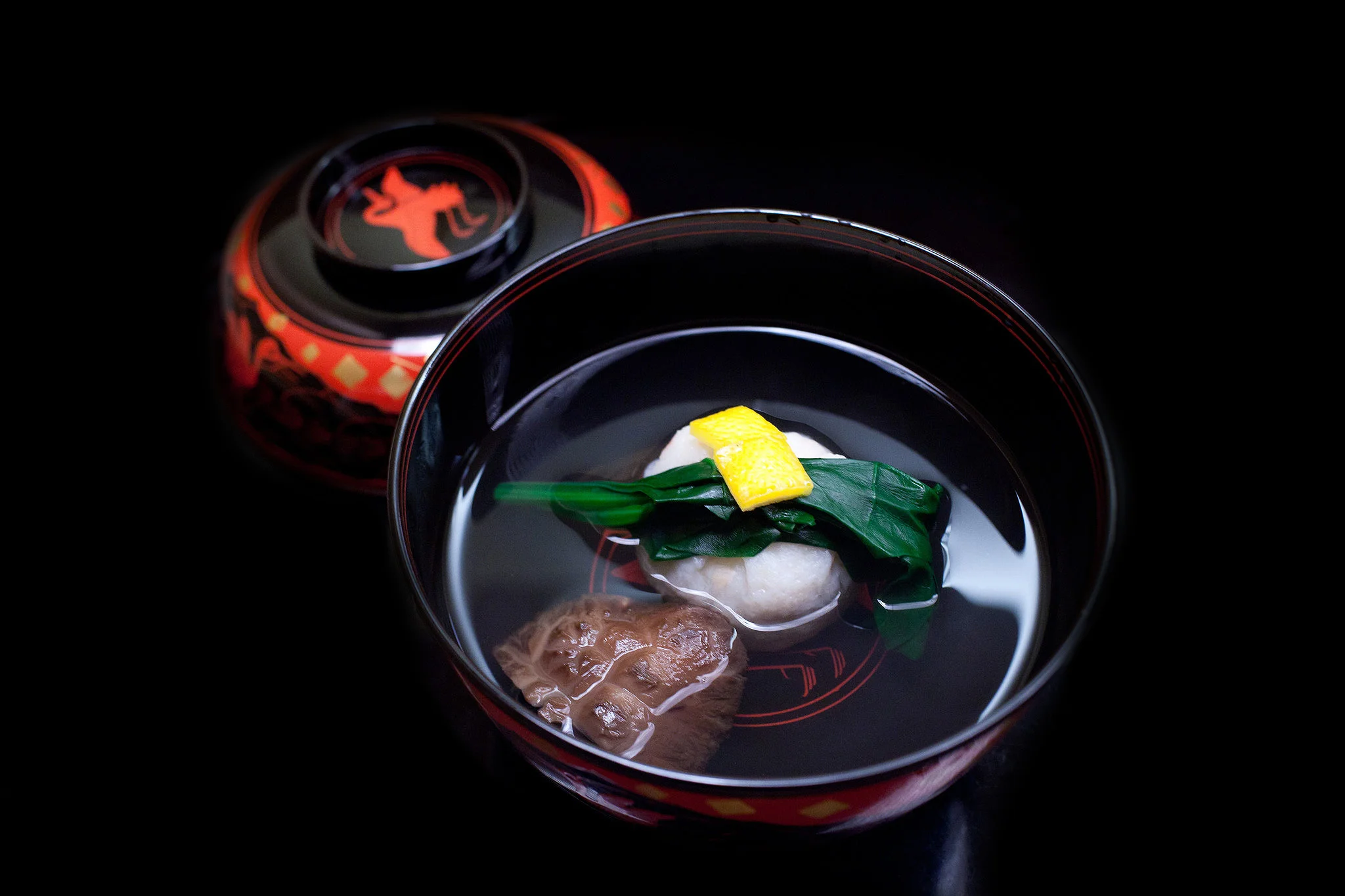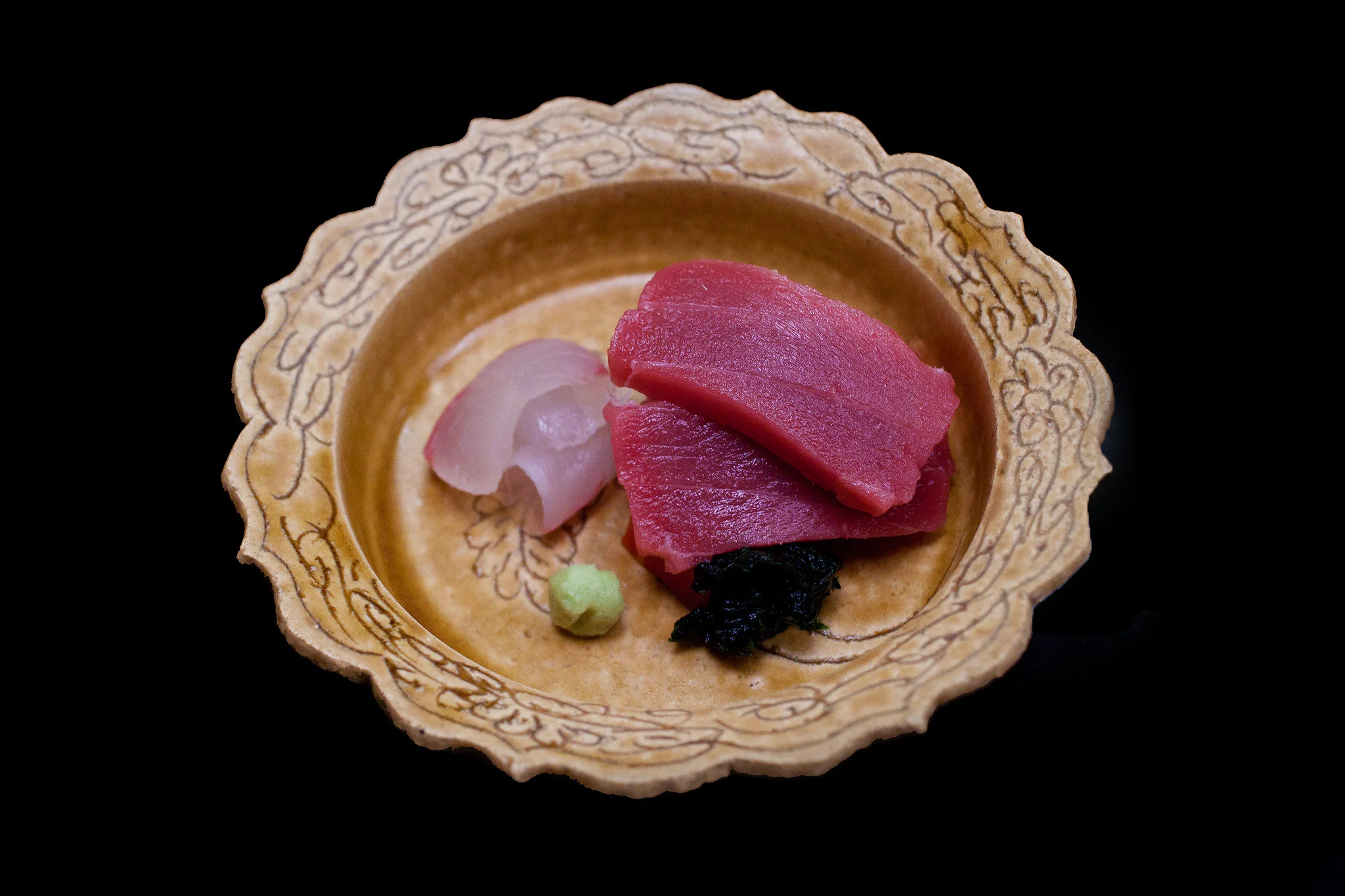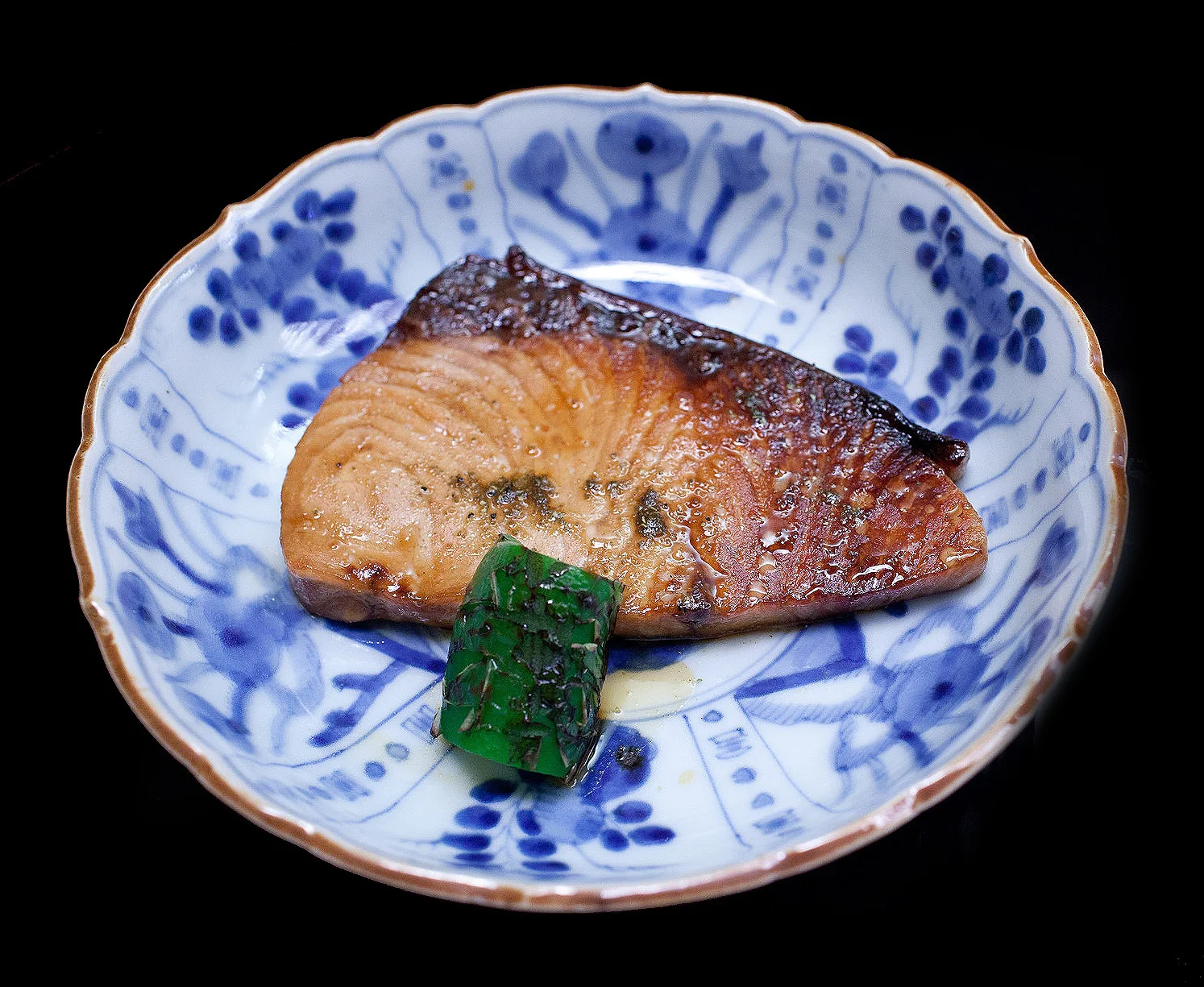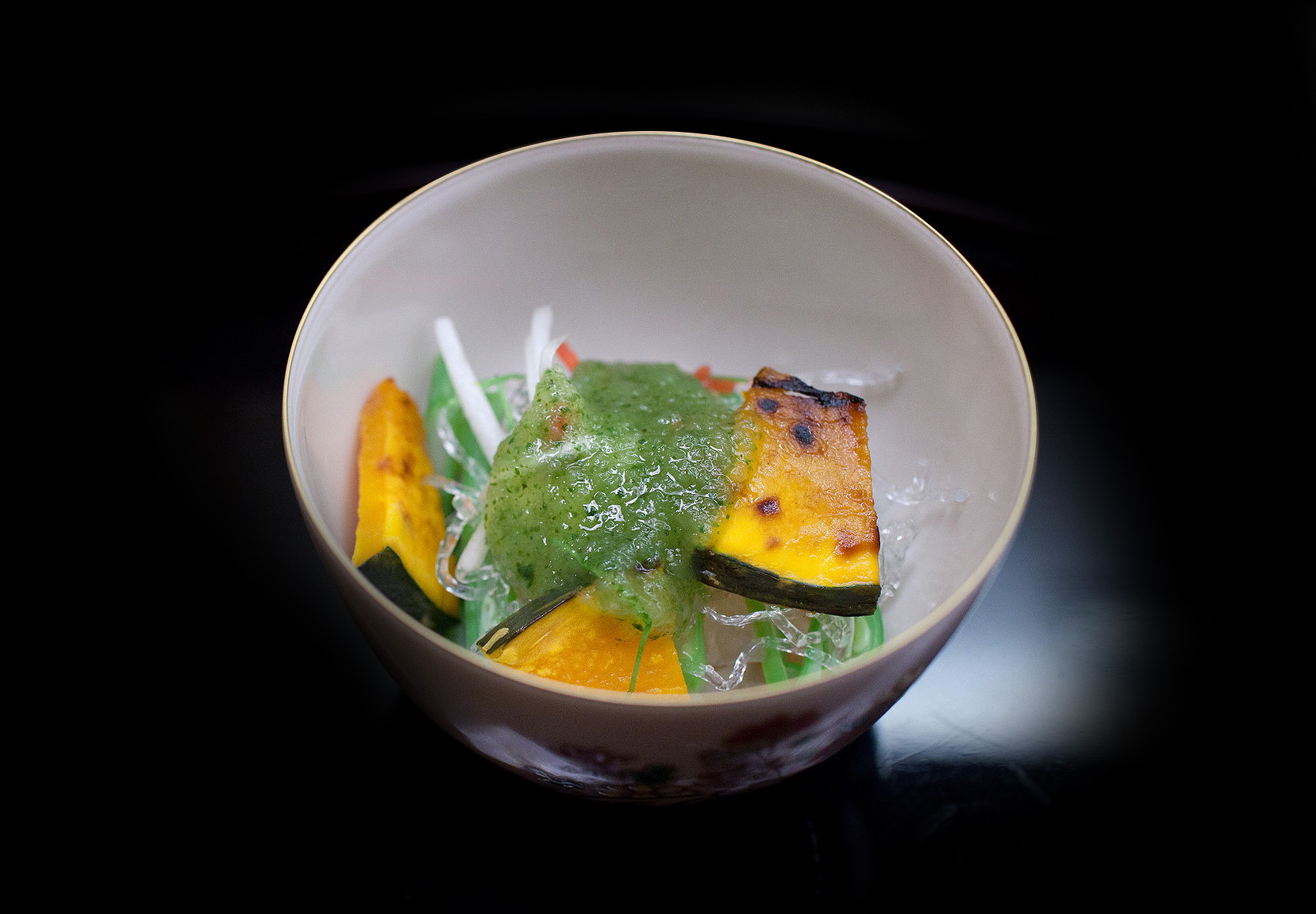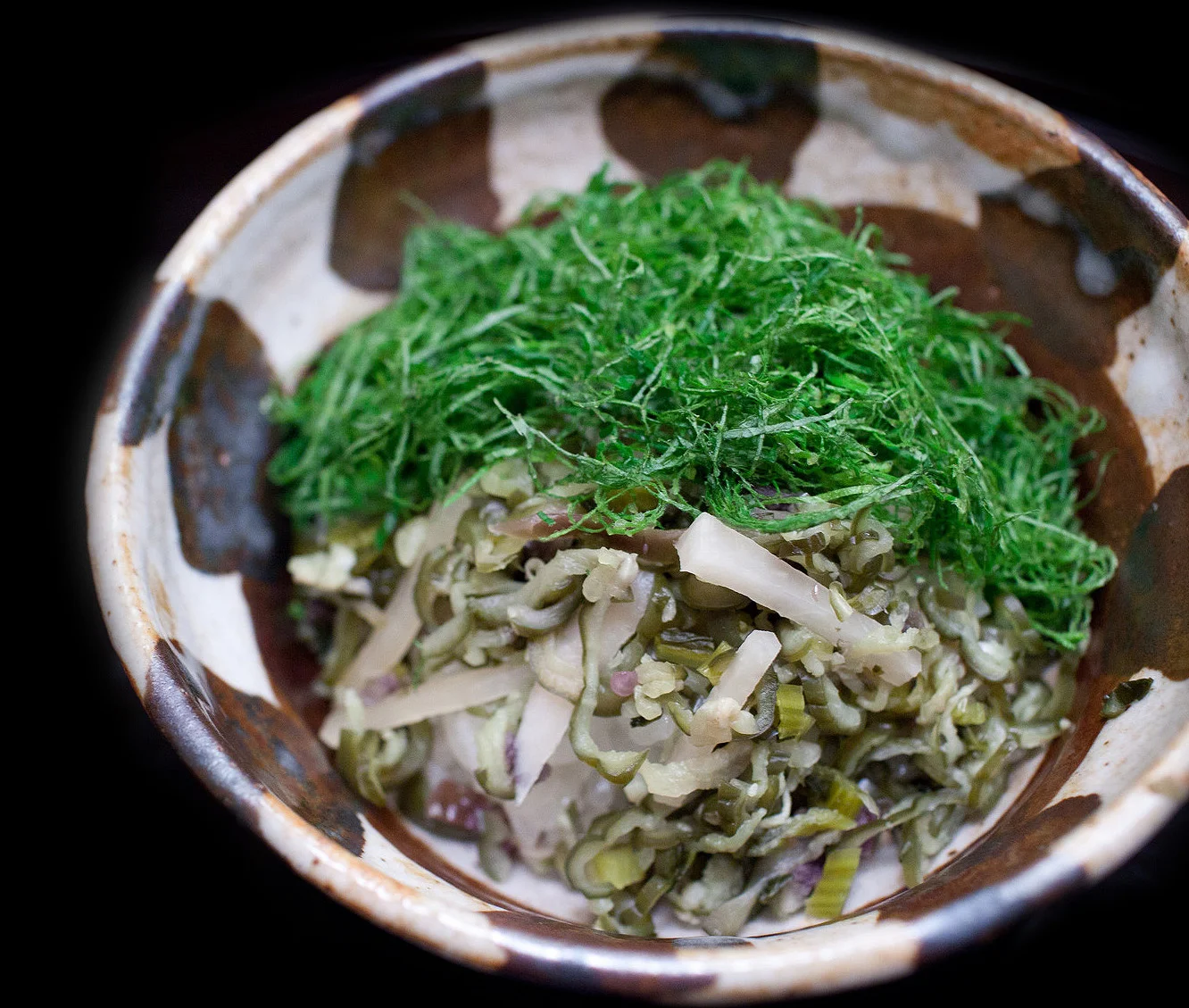Chihana
Kyoto's busy Shijo street -- now bordered with arcades, single-item shops, and fast-food -- was something quite different a hundred years ago. Shijo street is located in the center of Gion, the Geisha district of Japan's old capital city, Kyoto. The ancient Shijo-dori, originally constructed as a means for travellers to get directly to Yasaka shrine, is now one of Kyoto's busiest streets, full of cars and tourists. Remnants of the street's rich cultural past remain, including hundreds of narrow alleyways leading to quiet courtyards where one can still catch a glimpse of an ancient way of life. Chihana, which translates to "flower patch," was at first difficult to find. It didn't help that the name was written in little kanji: チ花. The restaurant is located at the end of a long and dark alley no wider than an arm's width sandwiched between two modern shops off this bright and busy street. With each step into the courtyard the sound of traffic dissipated into the darkness. At the end was an unlabeled sliding door -- common in this area of Kyoto where private Geisha dinners are held.
Our seat was at the counter lending to an atypical kaiseki experience that exchanged privacy for interactivity. While the serenity of private dining is something really attractive about kaiseki, the meal was made more interesting by being able to directly ask the chef or his assistant questions. Both were happy to explain dishes and their ingredients at length.
Bonito sashimi cured with pear and citrus fruits - A bright and sweet beginning, this course tasted like a peruvian ceviche with the acidity of the citrus complementing the lean and crisp bonito. The pear's skin added a dusty texture to the sauce that helped it stick to the fish. This dish was delicious, and I was pleasantly surprised to see what seemed like Asian fusion proudly served at such a traditional restaurant.
Bonito bottarga - With this course we made a sharp transition from fusion to tradition. Cured bonito roe densly packed together topped with bonito flakes. This was very salty. The minuscule eggs stuck together in a clump so tightly compressed that biting through this block was loud and conspicuous. The strong taste of fish and soy was too much for my dining companions, but I happily ate three of these.
Vegetables and white fish with miso sauce - Warm white fish interlaced with Japanese squash and turnip. The buttery miso sauce acted as an MSG alternative, really bringing out the latent umami in the fish making it taste like meat. The fish was soft and full of moisture. While there was no added sugar to this dish, the subtle saltiness of the paste made the turnip taste sweet. This simple dish was excellent.
Chicken ball with lotus root, pickled plum, and burdock - This dish was simmered keeping the flavors as simple as possible. I ate the plum puckering my cheeks anticipating a sour astringency but it was very mild and actually sweet, gently falling off the seed with the slightest chew.
Assorted vegetables with daikon radish and vinegar - A small hot vegetable cake tempura rife with scallions and sweet onion topped with daikon radish, vinegar, and soy sauce. Despite being deep-fried, there was no detectable oil whatsoever. The cool acidity of the vinegar against the hot and crispy tempura was phenomenal. Despite lacking meat, the scallion in combination with the vinegar and radish once again activated a umami flavor in the tempura batter. I really liked this.
Clear Broth Soup with Crab Ball - The fish was infused with a slice of lemon peel adding just a hint of citrus to the nearly translucent broth. This simple and pure course was a time to step back and reflect on each individual flavor.
Hirame and Chuo Toro with Dried Kelp - Thin slices of medium fatty tuna with lean fluke. To the side were strips of julienned dried kelp. The kelp was to be eaten with each slice of fish as an alternative to soy sauce. The similarity of the dried kelp to soy was remarkable: it tasted like concentrated soy sauce, only a hint sweeter. The tuna was unbelievably smooth and buttery.
Assorted small plates - Small cured fish, cod roe, black beans, ginko nuts, vegetables in miso paste, and monkfish liver. The monkfish liver was astounding; it has a similar creaminess to foie gras, like duck liver with gills. The silky smooth golden ginko nuts were also fantastic, having a slightly sweet flavor with an interior texture much like chestnut.
Filet of yellowtail - The weak course of the night. The fish was dry and starchy. Some of the fattier parts closer to the skin were smooth and juicy in texture, but this was the vast minority of the fish. This was overcooked.
Chihana, Kyoto, Japan - Assistant Chef
Simmered taro root with Kyoto carrot - As the simmered course in our kaiseki meal, the potato-like taro root signled the end was near. The constancy of the taro was less starchy than a potato but more than a turnip: somewhere in the middle. The taro absorbed the flavor of the dashi broth and, when combined with a small slice of the giant carrot, gained an element of sweetness. This course was a reminder that unsweetened vegetables, when left unseasoned, are indeed very sweet.
Pumpkin, clear seaweed, and radish with vinegar - Slices of roasted Japanese pumpkin enhanced by the acidic sweetness of the daikon and vinegar sauce. The seaweed was crunchy and burst with moisture with each bite.
Rice course - Japanese steamed rice with pickled vegetables, mushrooms, and freshly sliced shiso. This was incredible. The way the fresh shiso -- with flavors of fennel, mint, cinnamon, and orange peel -- interacted with the acidity of the pickled vegetables made the combination not only bright, but refreshing. The flavor was so light that I suspected the rice would float out of the bowl.
Chihana, Kyoto, Japan - Katsuyoshi Nagata,
Mandarin orange juice and green tea - Dessert was a simple shot glass of freshly squeezed mandarin juice with houjicha roasted green tea.
Chihana, Kyoto, Japan - Orange Juice and Green Tea
The meal provided insight into a tradition nearly five hundred years old. But what really struck me about this meal was how chef Nagata was able to stay true to traditional preparations while, very delicately, testing international flavor combinations. Pear and citrus, combined with sashimi, is more of a Peruvian flavor than Japanese, but delicious and he was not afraid to experiment with it.
Chef Nagata and his assistant, while still soft-spoken and composed, livened the experience with warm smiles and gracious hospitality. At the end of the meal the two of them left the restaurant and chivalrously walked us to our car. This, to say the least, is not common for Michelin 3* chefs.
This was a wonderful meal, perfectly in-sync with its timeless surroundings. Chihana is a reminder that traditional Japanese kaiseki -- its ingredients' flavors, smells, colors and textures -- can be a beautiful work of art.



